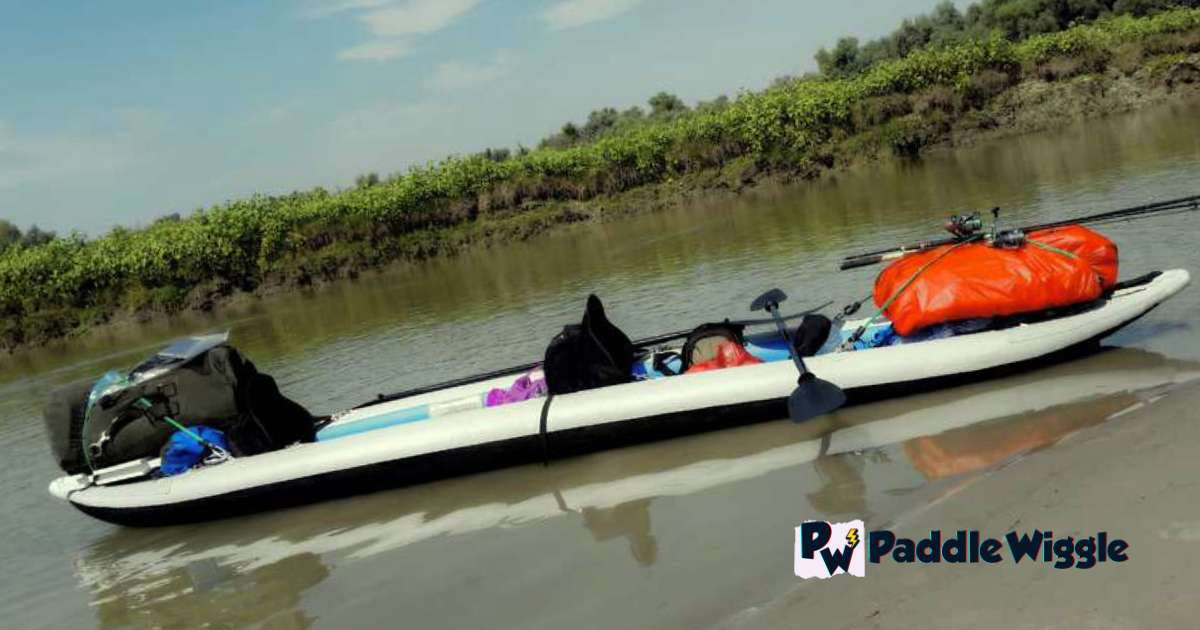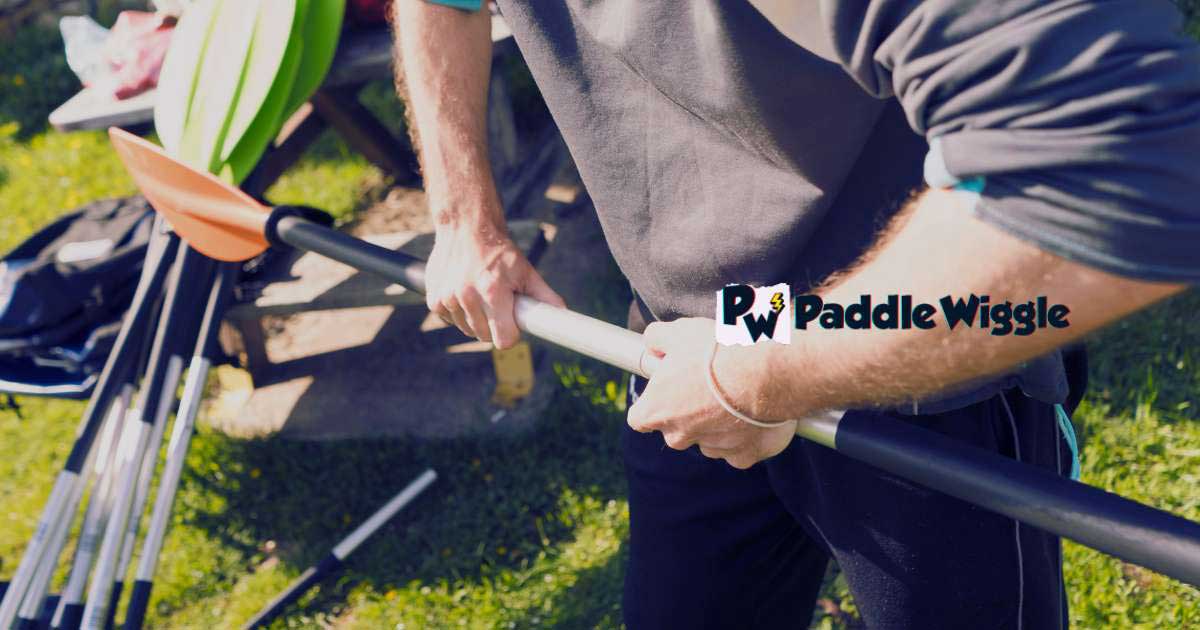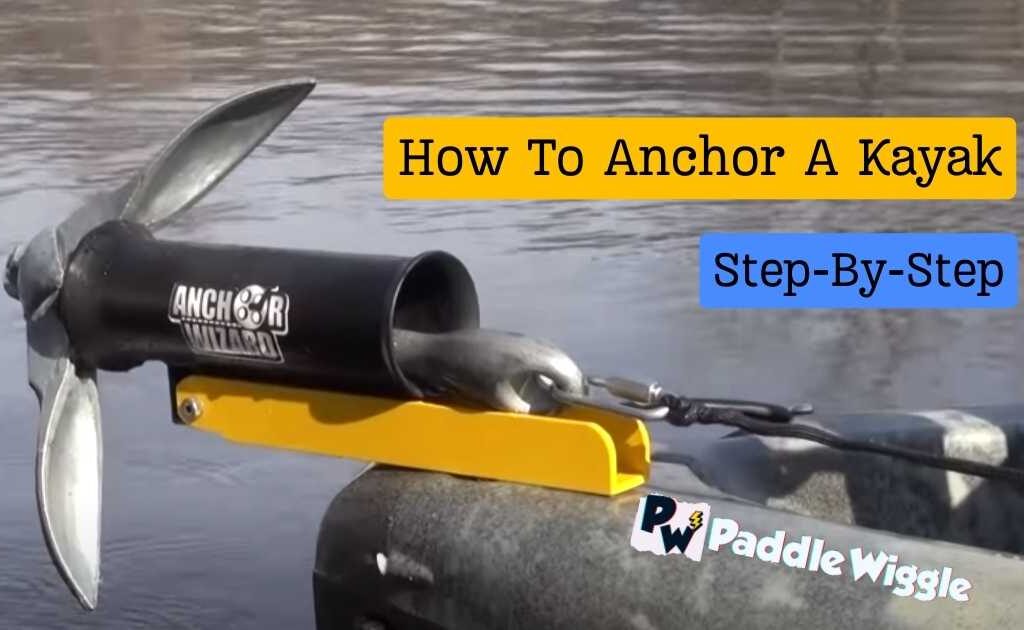If you’re considering purchasing a kayak or a proud owner of one, you may have wondered: how long do kayaks last? So, let’s start with the simple answer. kayaks typically last anywhere from 5 to 15 years.
Kayak lifespan depends on a number of factors. Some of them are the type of material used, how often it’s used, and how often it’s maintained.
The most durable kayaks are made of plastic and can last up to 15 years or more with proper maintenance. Meanwhile, inflatable kayaks last 3 to 5 years. It is ultimately up to the owner to take care of a kayak properly, and regular maintenance can extend its life.
Knowing the kayak’s longevity is crucial for both new buyers and existing owners. Because when you know how long kayaks last, you’ll know what to do to extend their life. And it will also help you maintain your boat properly.
Contents


Average Lifespan of Different Types Of Kayaks
The lifespan of a kayak depends on several factors, including the material it’s made of, the frequency of use, and the level of maintenance it receives. Although manufacturers offer warranties for kayaks, their longevity is not the same.
Let’s take a closer look at the average lifespan of different types of kayaks:
| Kayak Type | Average Lifespan |
|---|---|
| Plastic/Rotomolded | 10-15 years |
| Fiberglass | 10-15 years |
| Inflatable | 3-5 years |
| Wooden | 7-12 years |
Recreational Kayaks
Recreational kayaks are mostly made from plastic. And these kayaks can last up to 10-15 years. But hold on – there’s more to it than just that. The lifespan of a recreational kayak can be impacted by various factors, such as the level of TLC it receives.
And proper storage and meticulous cleaning can greatly extend their life.
Touring Kayaks
Touring kayaks are generally made from two primary materials. The first is made from composite materials and, with proper care, can last up to 10-15 years.
It doesn’t end there! For those who prefer a less expensive option, plastic touring kayaks can last up to 10-15 years. Designed for long-distance kayaking, these kayaks can handle frequent use and wear and tear.
Whitewater Kayaks
Whitewater kayaks made from plastic can last up to 10-15 years. Whitewater kayaks are built to withstand the impacts of rough waters and collisions with rocks and other obstacles.
Inflatable Kayak’s Lifespan


Inflatable kayaks are not as durable as hard-shell kayaks and have a shorter lifespan of approximately 3-5 years with frequent use. However, with proper care, such as regular cleaning and storage, an inflatable kayak can last longer.
Factors Affecting Kayak Lifespan
Getting out on the water in a kayak is a uniquely exhilarating activity.
Although kayaks are durable, they do not last forever, and they can be affected by several factors. And it’s a perplexing topic for kayak enthusiasts. But don’t worry, and we’re here to shed some light on this enigmatic topic!
Now let’s take a look at what affects a kayak’s lifespan and discover how to keep it in top shape.
Material
The material of a kayak is one of the most crucial aspects that affect its durability. Why, you ask? Well, different materials have distinct strengths and weaknesses that can impact the kayak’s longevity, making it a total mystery!
Now, listen up. Plastic kayaks, also known as rotomolded kayaks, are the most common and cost-effective option out there. They are tough cookies, but beware! They can weaken over time due to UV damage from prolonged exposure to the sun.
Next up, fiberglass kayaks, which are great for touring, are light and easy to maneuver. But here’s the kicker: they can crack or break if not handled with care.
Moving on, composite kayaks are crafted from a blend of different materials. These are typically fiberglass, carbon fiber, and Kevlar. They’re lightweight and super maneuverable. But brace yourself. They are the most delicate and fragile of the bunch.
Lastly, we’ve got wooden kayaks. These are handcrafted. And if taken care of properly, they can last a lifetime! However, they are more expensive than other types of kayaks.
Maintenance
Maintenance is a critical factor that affects a kayak’s lifespan. Listen, regular maintenance helps prevent damage and prolongs the kayak’s life. Cleaning after use, correct storage, and checking for wear and tear are all proper maintenance. But beware! Failing to maintain your kayak can cause severe long-term damage, shortening its lifespan.
Usage
Using a kayak regularly and intensively can also affect its lifespan. When you use your kayak more frequently, it is more likely to damage quickly. In particular, the hull suffers from frequent use.
Kayaks used for touring or whitewater kayaking are more likely to experience damage due to collisions or rough handling.
However, you need not worry. It’s all about using the appropriate kayak for the intended activity, handling it with care, and mitigating these effects. Take it easy and choose the kayak that’s right for your adventure. Handle it with love!
Environment
Is it true that the environment in which the kayak is used can also affect its lifespan? Sea kayaks are more likely to get damaged because they’re frequently exposed to sunlight, saltwater, and extreme temperatures.
Over time, UV radiation can make plastic kayaks brittle, and saltwater can corrode metal. It doesn’t stop there!
That’s why you’ll need to store your kayak correctly. Make sure you protect it from direct sunlight, salt water, and extreme temperatures. And when you don’t use your kayak, store it in a garage or shed when not in use to prevent environmental damage.
So, if you want your kayak lasts a long time, give it the love it deserves!
Kayaks Materials And Their Longevity
Kayaking is a popular recreational activity that has been enjoyed for centuries. Kayaks come in different types and are made from different materials. The material used in making a kayak is an essential factor to consider when purchasing one. The longevity of a kayak is dependent on various factors, including the type of material used.
Let’s discuss the different types of kayak materials and their longevity.
Plastic Kayaks


Plastic kayaks are a popular and affordable option but require proper care to maintain their durability.
After usage, rinse with fresh water and wipe with a soft cloth to remove debris. Store the kayak in a dry and cool place, away from direct sunlight, to prevent UV damage.
Failure to store the kayak correctly can reduce its lifespan, and it may become brittle over time.
To avoid this, store the kayak in a garage, or shed or cover it with a tarp to protect it from sunlight and environmental damage.
Fiberglass Kayaks
Fiberglass kayaks are a popular choice for touring due to their lightweight and maneuverability. However, they are more susceptible to impact damage and can crack or break if not handled with care.
To ensure the longevity of a fiberglass kayak, proper maintenance is essential. Rinse the kayak with fresh water and wipe it down after each use to remove any dirt or debris. Store it in a dry and cool place, away from direct sunlight, to prevent UV damage.
Additionally, it’s essential to avoid exposing the kayak to impacts or rough handling that can cause damage. With the right usage and maintenance, fiberglass kayaks can last between 10 to 15 years.
Kevlar Kayaks
Kevlar kayaks are made from a composite material that includes layers of Kevlar fabric and resin. Kevlar is a high-strength material that is also lightweight, making it ideal for kayaks. Kevlar kayaks are the most durable and can withstand impacts and collisions with rocks and other obstacles. However, they are also the most expensive. In terms of longevity, Kevlar kayaks can last up to 15 years or more with proper maintenance.
To maintain a Kevlar kayak’s longevity, it’s essential to avoid exposing it to impacts or rough handling. After each use, rinse the kayak with fresh water and wipe it down with a soft cloth to remove any dirt or debris. It’s also crucial to store the kayak in a dry and cool place, away from direct sunlight.
Wooden Kayaks
Wooden kayaks are typically handcrafted and can last a lifetime if maintained properly. They are made by assembling strips of wood, typically cedar, over a frame. The wood provides the kayak with strength and durability, while the frame helps to support the structure. Wooden kayaks require regular maintenance and can be more expensive than other types of kayaks. In terms of longevity, wooden kayaks can last for several decades if maintained correctly.
To maintain a wooden kayak’s longevity, it’s essential to keep it dry and avoid exposing it to direct sunlight or extreme temperatures. After each use, rinse the kayak with fresh water and wipe it down with a soft cloth to remove any dirt or debris. Wooden kayaks require regular maintenance, including oiling the wood and sealing any.
How to make your kayak last longer?
Kayaking is a fun and exciting outdoor activity that can be enjoyed for years to come. However, like any piece of equipment, kayaks have a lifespan, and various factors can affect their durability and longevity. Fortunately, there are steps you can take to help extend the life of your kayak and keep it in top condition. In this article, we’ll discuss how to make your kayak last longer.
Proper Maintenance


Proper maintenance is one of the most critical factors in extending the lifespan of your kayak. Regular maintenance can help prevent damage and keep your kayak in top condition. Proper maintenance includes cleaning your kayak after each use, storing it correctly, and checking for any signs of damage or wear.
After each use, rinse your kayak with fresh water and wipe it down with a soft cloth to remove any dirt or debris. This can prevent buildup that can damage the kayak over time. It’s also essential to store your kayak correctly, ideally in a dry and cool place, away from direct sunlight.
Regularly check your kayak for any signs of damage or wear, such as cracks, scratches, or dents. Repair any damage as soon as possible to prevent it from worsening. Neglecting small damages may cause them to become bigger problems that are harder to fix.
Proper Usage
Proper usage of your kayak can also help extend its lifespan. Use your kayak for the purpose for which it is intended. For example, a recreational kayak is not suitable for whitewater kayaking, and a whitewater kayak is not suitable for touring. Using a kayak for activities that it is not designed for can lead to damage or even complete failure.
Also, handle your kayak with care when loading and unloading it from your vehicle or moving it around. Avoid dragging your kayak, as it can cause damage to the bottom surface.
Appropriate Storage
Proper storage is another critical factor in extending the lifespan of your kayak. Store your kayak in a dry and cool place, away from direct sunlight. Sunlight and heat can cause kayaks to become brittle and fade over time. UV radiation can also cause plastic kayaks to become brittle.
If you’re storing your kayak outside, cover it with a tarp to protect it from the elements. It’s also a good idea to keep your kayak off the ground to prevent it from getting wet or damaged.
Consider the Material
In terms of lifespan, a kayak’s construction material has a significant impact. Despite being the most affordable option, plastic kayaks may become brittle if exposed to direct sunlight. And this reduces their longevity.
For touring kayaks, fiberglass kayaks are popular because of their lightness and maneuverability. However, they may break or crack when collided with or handled roughly.
Fiberglass, carbon fiber, and kevlar are all used to construct composite kayaks. In addition to being the most expensive, composite kayaks are also the lightest and most maneuverable. Despite their fragility, they can easily be damaged if not handled properly.
Wooden kayaks are typically handcrafted and can last a lifetime if maintained properly. However, they require regular maintenance and can be more expensive than other types of kayaks.
Be Mindful of the Environment
The environment in which you use and store your kayak can also affect its lifespan. Kayaks that are frequently exposed to sunlight, saltwater, or extreme temperatures are more likely to experience damage. UV radiation can cause plastic kayaks to become brittle, while saltwater can corrode metal components.
Store Your Kayak Properly
Proper storage of your kayak is essential to prolong its lifespan. When you store your kayak, make sure to keep it in a dry, cool, and shaded area to prevent damage from the sun’s UV rays. Exposure to sunlight can cause fading and can make the material brittle over time. If you have to store your kayak outside, invest in a good-quality kayak cover to protect it from the elements.
Clean Your Kayak Regularly
Cleaning your kayak regularly is also important to keep it in good condition. After each use, rinse your kayak with fresh water to remove salt and debris that can cause damage to your kayak’s surface. Use mild soap or detergent and a soft brush or sponge to clean your kayak. Avoid using abrasive cleaners that can scratch or damage the kayak’s surface.
Inspect Your Kayak Regularly
Regular inspections can help you detect any damage or wear and tear to your kayak before it becomes a bigger problem. Check the hull for cracks, scratches, or any other signs of damage. Inspect the cockpit and seat areas for any loose screws or fittings that need tightening. Make sure the kayak’s hardware, such as handles, bungee cords, and rudder, is in good condition.
Repair Any Damage Immediately
If you detect any damage during your inspection, it’s essential to repair it immediately to prevent it from getting worse. Small cracks or scratches can be repaired with a kayak repair kit, which can be purchased at any outdoor or sporting goods store. Larger damages may require professional repair or replacement. If you’re not sure how to repair the damage, consult with a professional.
Transport Your Kayak Properly
Transporting your kayak can be one of the most challenging parts of kayaking. Improper transportation can cause damage to your kayak, especially if you’re using a roof rack or trailer. Make sure to secure your kayak properly with straps or tie-downs to prevent it from moving or sliding during transport. Use foam pads or cradles to protect your kayak from scratches or dents. Be sure to check the weight capacity of the kayak before loading it with gear to avoid overloading it.
Choosing a Kayak with Longevity in Mind
Kayaking is an excellent way to explore the great outdoors and enjoy the natural beauty of the water. However, if you’re considering purchasing a kayak, it’s important to choose one that will last for many years to come. A kayak that is well-made and built to last can provide many enjoyable years of paddling and also save you money in the long run.
Let’s discuss how to choose a kayak with longevity in mind.
Material Affects The Longevity Most
For your kayak to last a long time, you need to choose the right material. There are various materials to choose from, including plastic, fiberglass, Kevlar, and wood. Each of them has its own set of characteristics that impact your kayak’s durability and lifespan.
Rotomolded kayaks, or plastic kayaks, are the most common and affordable type. In general, they are very durable and can withstand impacts and collisions with rocks. In direct sunlight for extended periods, plastic kayaks may become brittle due to UV damage.
Fiberglass kayaks are lightweight and maneuverable, making them popular touring kayaks. If they are exposed to collisions or rough handling, they may crack or break. To maintain the longevity of a fiberglass kayak, proper handling, and care are essential.
A composite kayak is made of layers of fiberglass, carbon fiber, and Kevlar. They are the most expensive and the lightest, and most maneuverable. However, composite kayaks are also the most fragile and require careful handling to avoid damage.
Wooden kayaks are handcrafted and last a lifetime. They require regular maintenance to ensure their longevity, and they can be more expensive than other types of kayaks. Wooden kayaks have a classic look and feel that many kayakers find appealing. But they require more effort to maintain than other materials.
Design
Another critical factor to consider when choosing a kayak with longevity in mind is the design. Different designs are better suited for different types of kayaking, and the right design can make your kayak more durable and last longer.
For example, if you plan to use your kayak for touring, consider a longer and narrower kayak. These designs can be faster and more maneuverable in the water, reducing the amount of effort you need to put into paddling. This can help to reduce wear and tear on your kayak over time.
Whitewater kayaks, on the other hand, require a shorter and wider design to provide more stability in fast-moving water. A well-designed whitewater kayak can withstand the rigors of navigating rapids and other obstacles, making it more durable and long-lasting.
Manufacturer Reputation
When choosing a kayak with longevity in mind, it’s important to consider the reputation of the manufacturer. A reputable and established manufacturer is more likely to produce high-quality kayaks that are built to last.
Take the time to research different kayak manufacturers and read reviews from other customers. Look for a manufacturer that has a good track record of producing high-quality, durable kayaks that are built to last.
Intended Usage
The intended usage of your kayak is another essential factor to consider when choosing a kayak with longevity in mind. Think about the type of kayaking you plan to do and choose a kayak that is specifically designed for that purpose.
For example, if you plan to use your kayak for fishing, look for a kayak that is designed with features like built-in rod holders and storage compartments. This will help to protect your gear and make your kayak more durable over time.
Maintenance Requirements
Another crucial factor to consider when choosing a kayak with longevity in mind is the maintenance requirements. Every kayak requires some level of maintenance, and neglecting it can significantly reduce its lifespan. The good news is that some kayaks are easier to maintain than others, depending on their material, design, and construction.
For instance, plastic kayaks are generally low maintenance and require minimal upkeep. Fiberglass and composite kayaks may require more attention, including regular cleaning, waxing, and repair of any damage or scratches. Wooden kayaks require the most maintenance, including varnishing and oiling, to keep them in excellent condition.
It’s also essential to consider the ease of accessing and repairing any parts that may need replacement, such as the skeg or rudder. A kayak with easily accessible parts will be more convenient to maintain and repair, ensuring that it lasts longer.
Benefits of Investing in a High-Quality Kayak
Choosing a kayak with longevity in mind and investing in a high-quality kayak may require a more significant upfront investment. However, it’s a worthwhile investment that comes with several benefits, including:
Increased Durability and Longevity
High-quality kayaks are built with durable materials and sturdy construction, ensuring that they last longer than their cheaper counterparts. They can withstand regular use, impacts, and other wear and tear, resulting in a longer lifespan.
Better Performance
High-quality kayaks are designed for optimal performance, ensuring that you have a better kayaking experience. They are more maneuverable, faster, and more comfortable, providing a smoother and more enjoyable ride.
Improved Safety
A high-quality kayak is designed with safety in mind, ensuring that you stay safe while on the water. They are built with high-quality materials and construction, reducing the risk of accidents, leaks, and other safety concerns.
Better Resale Value
Investing in a high-quality kayak also means that it will retain its value better over time. If you decide to sell your kayak, a high-quality model will fetch a better price than a cheaper, low-quality model.
Final Words
It is crucial for any kayaking enthusiast to understand how long kayaks last and how to extend their lifespan. Materials, maintenance, usage, and environment all affect a kayak’s lifespan. So, it’s critical to take care of your kayak to ensure its longevity.



